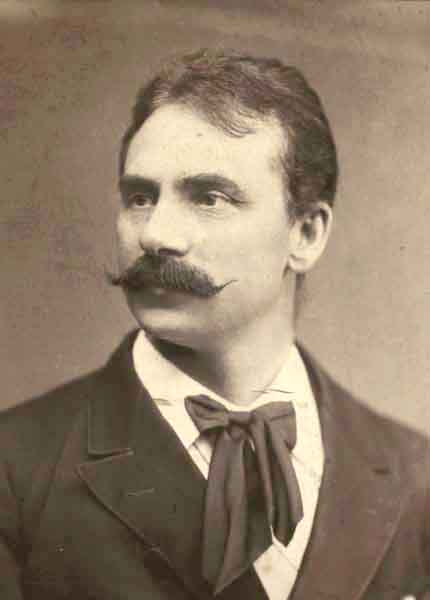<Back to Index>
- Physicist Jean Baptiste Perrin, 1870
- Composer Johan Severin Svendsen, 1840
- President of South Korea General Park Chung-hee, 1917
PAGE SPONSOR

Johan Severin Svendsen (30 September 1840 – 14 June 1911) was a Norwegian composer, conductor and violinist. Born in Christiania (now Oslo), Norway, he lived most of his life in Copenhagen, Denmark. His younger son from his second marriage was the famous Danish actor Eyvind Johan-Svendsen (1896 – 1946).
His father was a music teacher and Svendsen learned both the violin and clarinet from him. By the time he finished school, he was working as an orchestral musician, and occasionally made short concert tours as a violinist. In Lübeck, on one of his tours, he came to the attention of a wealthy merchant who made it possible for him to study from 1863 - 67 at the Leipzig Conservatory. He began his studies with Ferdinand David, but problems with his hand forced him to switch to composition, which he studied with Carl Reinecke. He completed his studies in Leipzig in 1867, receiving first prize in composition. During this period, Svendsen had a son out of wedlock, Johann Richard Rudolph (1867 – 1933).
Gradually his attention turned to conducting. After spending time in Paris (1868 – 70) and Leipzig (1870 – 72), he returned to Christiania. In the summer of 1871, he went to New York City to marry Sarah (Sally, later changed to Bergljot) Levett Schmidt, whom he had met in Paris. He was conductor of the Musical Society Concerts in Christiania (1872 – 77), then spent three years in Germany, Italy, England and France. He returned to teach and conduct in Kristiania (1880 – 1883). In 1883, he was appointed principal conductor of the Royal Theater Orchestra in Copenhagen, where he lived until his death.
In 1884, he and his wife separated, and she moved to Paris. Their relationship had been chaotic for several years. In 1883, in a fit of anger, she had thrown the only copy of his Symphony No. 3 in the fire. This incident was used by Henrik Ibsen in Hedda Gabler. Following a divorce from Sarah (10 December 1901), he married (23 December 1901) Juliette Haase with whom he had been living and had three children.
In stark contrast to his more famous contemporary and close friend, Edvard Grieg, Svendsen was famous for his skill of orchestration rather than that of harmonic value. While Grieg composed mostly for small instrumentation, Svendsen composed primarily for orchestras and large ensembles. His most famous work is his Romance for Violin and Orchestra. He was very popular in Denmark and Norway during his lifetime, both as a composer and a conductor, winning many national awards and honors. However this popularity did not translate into acceptance into the international repertory of classical music. He died in Copenhagen, aged 70.
Svendsen's first published work, the String Quartet in A minor, Op. 1, achieved great popular success. He quickly followed with the Op. 3 String Octet and Op. 5 String Quintet, both of which added to his early fame. All of Svendsen's chamber music was written while he was at the Leipzig Conservatory, yet these works are not considered student works. By general consensus, Svendsen was regarded as one of the most talented students then at the Conservatory. His works won prizes and received public performances to much acclaim.
Svendsen was at one time intimate friends with the German composer Richard Wagner.
Svendsen's output includes two symphonies, a violin concerto, and the Romance for violin, as well as a number of Norwegian Rhapsodies for orchestra.